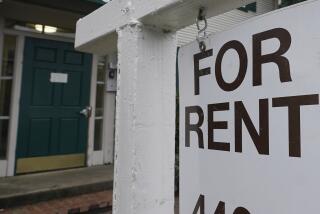Homeowners renting out space must follow tenant-landlord rules
Question: In these tough financial times I think a lot of people (myself included) are considering renting out part of their home, if not already doing so. I haven’t been successful in trying to look up what the law says about renting a room or part of your house. I read this is different from renting a duplex or regular rental property. Can you provide any guidance?
Answer: Your question is timely because many homeowners facing mortgage or other economic stresses are looking at room rentals as an option to increase their income. Most of the state laws governing tenant-landlord relationships in traditional apartment complexes apply equally to the room rental you are describing. For example, the requirements for performing maintenance and repairs, the limits on a landlord’s right to enter the rental premises and the security deposit requirements all apply.
Too often homeowners don’t consider the consequences of becoming landlords, and they fail to establish a workable relationship. Above all, the rental relationship should be described in a written rental agreement. An oral rental agreement is enforceable, but too often the tenant and landlord have different recollections of their oral agreement.
The written agreement should cover all essential elements, such as the amount of rent, amount of deposit, when rent is due, who is allowed to live in the rental room and whether the term is month to month or longer.
If you decide to use a rental agreement form, make sure it is up to date and correct. Don’t rely on Internet or stationery store versions, which may contain out-of-date or illegal provisions. One source of accurate advice, which includes forms you can use, is the California Landlord’s Law Book, published by Nolo Press.
One significant legal difference is if there is a “single family lodger” tenant-landlord relationship. A homeowner who rents a room to one tenant in his or her house, and who continues to live in the house, is subject to this rule, which is described in California Civil Code Section 1946.5. The most important difference is that a homeowner who has a single family lodger need only give a notice of termination to the lodger equal to the length of the rental payment period, regardless of the length of the tenancy. For example, if the rent is paid monthly, the notice would be a 30-day notice. This rule is different from the rule applicable to any other month-to-month tenant, who is entitled to 60 days’ notice after being a tenant for more than one year, regardless of the rental payment period.
Also, the single family lodger is potentially an exception to the usual rule in California that requires a landlord to use the unlawful detainer process in Superior Court to evict a tenant after the tenancy has been terminated. Under Section 1946.5, a single family lodger who does not leave after a 30-day notice of termination expires becomes a trespasser, and in theory can be removed by the police without requiring the landlord to complete the unlawful detainer process. However, many local police departments have decided as a matter of policy not to become involved in removing single family lodgers, so a homeowner would need to check the local police policy before relying on this doctrine.
An effort to evict a lodger for a violation of the rental relationship, such as failure to pay rent, requires utilization of the customary unlawful detainer process. Landlords, including homeowners, are never allowed to resort to “self help” eviction, such as changing the locks on the room.
Eichner is director of Housing Counseling Programs for Project Sentinel, a mediation service based in Sunnyvale, Calif. To submit a question, go to https://www.housing.org.
More to Read
Sign up for Essential California
The most important California stories and recommendations in your inbox every morning.
You may occasionally receive promotional content from the Los Angeles Times.






